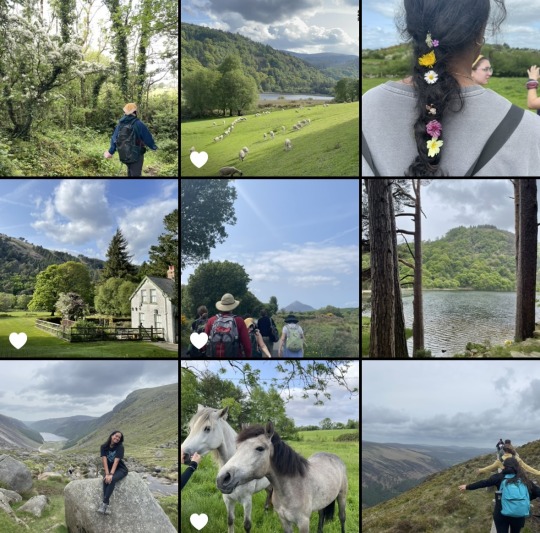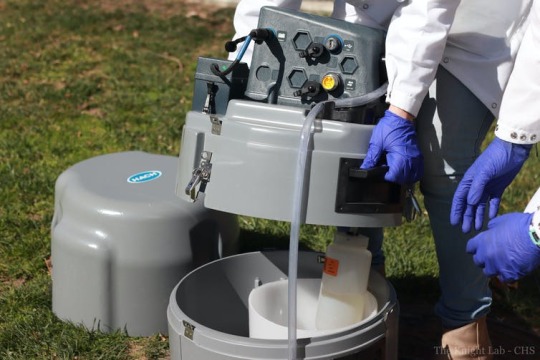#smruthi
Explore tagged Tumblr posts
Text
Weeks 33,34 (Tampa)
Sandeep A, Rick, Chirag, Suprama, Shilpa, Smruthi,
SWAGATAM MUKHOPADHYAY
MS: DMD; SPEECH, TME, EYE
Rakhi
DMD Parents
Flight to SAN
Malahari, IR, RimJihmGireSawan(Besame Mucho)
0 notes
Text
Alzheimer’s Disease
Alzheimer’s disease is a neuro generative disorder affecting the both cognitive and behavioral affections, which significantly affects the normal functioning. The symptoms worsen over time and patients end up with progressive memory loss, trouble concentrating, loss of judgement and language skills, personality changes.
The main feature of Alzheimer’s disease is the progressive accumulation of beta amyloid plaques outside neurons in the brain. The definite cause for AD is unclear; it is attributed to plaques that develop in the hippocampus region and other areas of the cerebral cortex, which are responsible for coding and decision making.
Signs & Symptoms:
Psychological symptoms
• Progressive memory loss • Restlessness • Difficulty in understanding • Depression • Difficulty in concentrating • Aggression & Agitation • Getting lost in familiar places • Withdrawal and disinterest
Physical symptoms
• Uncoordinated movements • Muscle stiffness • Shuffling or dragging feet while walking • Twitching or seizures • Sleeplessness • Weight loss • Dysphagia • Incontinence • Forgetting daily activities like bathing, dressing, etc.
Diagnosis:
1. Instrumental activities of daily living(IADL) include assessment of skills such as driving, medication and financial management. 2. Basic activities of daily living(BADL) include assessment of activities like toileting, bathing and dressing 3. Imaging studies – CT or MRI or PET of brain is recommended to rule out possible causes for symptoms.
Management:
AD is irreversible and a progressive brain disorder, but with the help of medications and therapies AD symptoms can be managed.
Ayurveda: Alzheimer’s disease is considered in Ayurveda as a “smruthi nasha”. Vata dosha is high in alzheimer’s disease. Tamasic and rajasic gunas are imbalanced in the AD and leads to slow congnition, poor memory and difficulty in performing tasks. The main treatment principle is to balance vata, external therapies like shirodhara and abhyanga will be useful. Nasya – one of the panchakarma treatment, medicated oil is used to nostrils and which is an easy and rapid way to deliver the medicated herbs to Cerebral nervous system.
Yoga therapy: yoga therapy is known to impart bio-psycho-social well-being when implemented as a life style measure. Combination of physical poses, breathing exercise, relaxation technique and pranayama has been shown to improve functional abilities, self - esteem and level of independence in daily activity in AD. Mindful meditation, mantra chanting has proven to induce beneficial changes in the CNS dopaminergic and other neurochemical systems linked to specific regions of the brain.
Naturopathy Management:
Diet therapy: Diet plays an important role in the prevention, mitigation and prognosis of AD. Intake of fruits, dark green vegetables, nuts and polyunsaturated fatty acids help in reducing the risk of memory loss due to the presence of Vit E, folic acid, docosahexaenoic acid (DHA) eicosapentaenoic acid (EPA) & their role in preventing synaptic loss.
Choline is an essential nutrient that helps to improve cognitive function. Its major dietary sources are spinach, beet, wheat, groundnuts etc. Vit B12 & folic acid are directly responsible for pathogenesis of AD and their deficiency leads to neuronal damage and memory loss.
As weight loss is the major concern, inclusion of more proteins in the forms of legumes, pulses and nuts are advised. Use of citric fruits recommended to avoid often gastrointestinal difficulties including nausea & vomiting.
To summarize, there is sufficient evidence to recommend specific dietary modifications in clinical practice to risk reduction and management of mild cognitive impairment /AD.
Acupuncture: The action of acupuncture is more pronounced in post-acupuncture resting state and indicates a sustainable effect. This improvement is mainly by enhancing the hippocampal connectivity, which is otherwise impaired in AD. Acupuncture improves cognitive function by enhancing glucose metabolism and neurotransmission and reducing the oxidative stress, A beta protein deposition and neuronal apoptosis. Acupuncture is shown to influence and activate the impaired brain regions in AD patients.
Heliotherapy: Sun exposure is found to be associated with an increase in heuristic processing, which requires memory storage and relevant memory retrieval. Hence sun bath can be included as a therapeutic tool in the management of AD.
Melatonin & serotonin are the two neurotransmitters regulated by the supra chiasmatic nucleus (SCN). Both of them are influenced by sunlight, whose role in cognitive defects in AD is well established
helps in preventing and improving symptoms and quality of life for patients and caregivers. They stimulate different parts of the brain based on various steps of practice, which includes pranayama, asana, chanting and different forms of concentrations.
Conclusion:
Combination of Ayurveda, yoga & naturopathy help AD patients to manage the symptoms & prevents the further progression.
For More Visit
0 notes
Text
Experiencing the Magic of Ireland
By Smruthi Sathya
Class of 2025, Rutgers Business School, Member of the Honors College

Last spring, I had the opportunity to take the embedded study abroad "To Be a Pilgrim" Interdisciplinary Honors Seminar and travel to Ireland alongside Honors College and SAS Honors Program students.
In this course, we immersed ourselves in Irish traditions and walked historic pilgrim paths. While I had always planned to study abroad in college, I did not expect that a ten day trip would change so much about the way I viewed the world.
During the semester, we learned about the importance of setting a goal or intention prior to embarking on a pilgrimage. I often feel like my brain is running a marathon, so I decided to set my intention to live more in the present. On our first walk in Glendalough, my new perspective helped me discover new shades of green. With sheep running in the distance and tall trees soaring above, my first glimpse of Ireland was a chapter out of a fairytale. Leaving the past behind and forgetting the future to come, I stayed with the sheep in that moment and etched the new shade of green into my memory.
While walking these pilgrimages, I helped forge blossoming friendships into a newfound family. On our 25 mile pilgrim walk to Croagh Patrick, our group sang classic 2010 throwbacks one after another, shared our favorite college memories, and laughed until our laughter echoed off of the mountains that surrounded us. Constant curiosity to learn more about the significance of the various pilgrim paths, coupled with a revived purpose, made this trip a turning point in my life.
More than anything else, the people I met on this trip truly made it an unforgettable experience. From waiters at restaurants to our host’s grandmotherly love, my classmates and I shared stories, customs, and traditions with everyone we met. During our stay in Galway, we learned an Irish step dance snippet from a professional Riverdancer and even learned a traditional broom dance! And I will never forget my first conversation with an Irish native on the train to Wicklow who said that the weather cleared up because we brought the sunshine with us.
By the end of the trip, I had never felt more at peace. With the lessons I learned from the people I met and the reflections I made during our pilgrimages, I was able to view my life through a new lens and envision a future that stretched outside of the confines I had previously set for myself. I will always be grateful to the Honors College for allowing me to embark on this physical and mental journey and for giving me some of my favorite college memories.
There was something about this trip that felt fantastical—in the way the trees breathed and the sunsets sang. Maybe it was a result of the tired haze from all our pilgrimages, or maybe it was the magic of Ireland.
0 notes
Text

Transforming Aspirations into Achievements Down Under With Aives Australia
Congrats Smruthy Marshal Your Skilled Nominated (subclass 190) Visa has been granted by the Australian Govt. Enjoy your life in Australia.
Another client, enjoying the benefits of choosing Aives Australia.
Is Australia your dream country?
Reach out to us: www.aivesaustralia.com
Contact Us:
UAE +971 528942393
Kochi- +91 7994443030
Australia +61413863628
Bangalore - +91 9986400077
#successcelebration#successstories#visagranted#subclass190#foodtechnologist#australiamigration#skillednominated#aivesaustralia#kochi#dubai#bangalore#melbourne
0 notes
Text
Week 49
1. (Submitted) MS. Genomics. Liver.
2. Organoids (Biobits)
3. Smruthi,
4. IAMD - registry
5. AarogyaAI; Nemene; Kodo
6. Music fun
7. X flute

0 notes
Text
The nuclear icebreakers enabling drilling in Russia’s Arctic
Russia, the US, and China want to develop the Arctic. Here’s how Russia’s multifunctional nuclear vessel would expand shipping routes to Europe and Asia. By Smruthi Nadig ussia is home to the only nuclear icebreaker fleet in the world, built to meet maritime transportation requirements through modern nuclear technology. The country’s aim of establishing an Arctic shipping route would open up…

View On WordPress
0 notes
Text

Smruthi Gargi Eswar "PRAKRITI" (smuartcatalog.tumblr.com)
14 notes
·
View notes
Text
Dr. Smruthi Ranjan Mishra: Gastroenterologist at Institute of Digestive and Hepatobiliary Sciences | Medanta
Dr. Smruthi Ranjan Mishra is a specialist of gastroenterology, having been a recipient of the Anatomy Honors Award, Best young Investigator and Plenary Award and Award for Oral Presentations
0 notes
Photo

మోదీ కేబినెట్లో అత్యుత్తమ మంత్రి ఈయనేనట.. ‘ఇండియాటుడే-కార్వీ ఇన్ సైట్స్’ సర్వేలో వెల్లడి ఇండియాటుడే - కార్వీ ఇన్ సైట్స్ నిర్వహించిన 'మూడ్ ఆఫ్ ది నేషన్' సర్వేలో ఆసక్తికర ఫలితాలు వెల్లడయ్యాయి. ప్రధాని మోదీనే మళ్లీ ప్రధాని కావాలని 66 శాతం మంది కోరుకున్నారు.
#&039;Mood of the Nation&039; survey#Amit shah#Carvey Insights#Dharmendra prasad#IndiaToday#Jai shanker#modi cabinet#Nirmala sitaraman#nithin gadkari#PM narendra modi#Rajnath Singh#Ravishankar prasad#Smruthi Irani
0 notes
Text
69420
i was reading this as 694 20 at first trying to figure out the significance mgndmgmdmfmd but anyways !!! ik we don't really talk anymore but it always makes me smile when you'll just randomly hit me up like u were one of my first friends on here that i actually got close 2 and being part of such a good friend group helped me find the courage 2 like ... make other friends on here too idk like i just felt more comfortable talking to people after being friends w the #fricksclique for so long and ill never forget those times bc they were really important n pivotal years for me and i'm glad i had u there as such a good friend :)
1 note
·
View note
Text
Week 6. (Mumbai 6; Pune 1)
1. IITB amazing time
2. Actrec - HuSCID (Swetha and Sonali - Physics Biology); DMD parents; NINMS; Hindi School (Prashant)
3. Smruthi Suryaprakash!!! Finally.
4. 1/2 Dunki
5. DD126
6. Shalaka and Pratik
7. अभी तुझमें नहीं, मोह मोह के धागे

0 notes
Text
Cute and Sexy Smruthi venkat photo gallery
Cute and Sexy Smruthi venkat photo gallery




Read Thadam movie review here
View On WordPress
#Mouna Valai heroine#Mouna Valai lead actress#Smruthi Venkat#Smruthi Venkat sexy stills#Thadam heroine#thadam lead actress
0 notes
Text
Megha Akash’s debut Bollywood film’s producer owned the remake rights of ‘Thadam’!
Megha Akash’s debut Bollywood film’s producer owned the remake rights of ‘Thadam’!

Having Arun Vijay, Tanya Hope, Vidya Pradeep, Smruthi Venkat, FEFSI Vijayan, Yogi Babu, Meera Krishnan, Soniya Agarwal and George Maryan in the important roles, ‘Thadam’ is directed by Magizh Thirumeni with the bankrolling of Inder Kumar’s ‘Redhan – The Cinema People’. With the great suspense-action thrilling genre, the plot in the film had been recognized with good response on screens with great…
View On WordPress
0 notes
Text
Sewage-testing robots process wastewater faster to predict COVID-19 outbreaks sooner

- By Smruthi Karthikeyan , Rob Knight , UC San Diego , The Conversation -
The big idea: by using a sewage-handling robot, our laboratory has been able to detect coronavirus in wastewater 30 times faster than nonautomated large-scale systems. This advance, published in the microbiology journal mSystems, provides even more lead time to communities monitoring their wastewater for early warning about local cases of COVID-19.
When clinical studies emerged showing that people who test positive for SARS-CoV-2 shed the virus in their stool, the sewer seemed like an obvious place to look for it. Wastewater surveillance can be used at the community level to see potential outbreak clusters before clinical diagnosis, especially in areas where COVID-19 prevalence rates far exceed testing rates.
The problem is that the virus is heavily diluted in the waste stream because of how many people’s bathrooms drain into it, not to mention all the other junk they flush. Surveillance depends on concentrating the viral particles from the wastewater to detect these low levels. This viral concentration step is typically the major bottleneck in wastewater analyses because it’s laborious and time-consuming. Our robot system takes a different, quicker approach.

Wastewater treatment plants can be the front lines for coronavirus detection in a community. San Diego County, CC BY-ND
Why it matters
Cities, schools and businesses around the country are using wastewater surveillance to find coronavirus in their midst.
Wastewater surveillance is especially useful as an early-alert system for high-risk areas, such as communities where undocumented residents may be cautious about individual testing.
The most commonly used viral concentration technique uses filters and can take anywhere from six to eight hours to transform a couple dozen sewage specimens into samples that can then be tested for the presence of SARS-CoV-2. Our new protocol concentrates 24 samples in a single 40-minute run.
We repurposed gear that usually performs microbiology or cell biology tasks in the lab to deal with sewage instead. By miniaturizing and automating our system, we eliminate a bunch of labor-intensive steps, resources and associated costs. And our hands-free process is much quicker.

Researchers gather a liter of sewage collected over the course of the day from a sewer line connected to a UC San Diego building. C.H. Sheikhzadeh, CC BY-ND
How we do this work
We gather sewage from autosamplers at San Diego’s main wastewater treatment plant, as well as from those we’ve deployed at over 100 manholes on the campus of the University of California, San Diego, which collect sewer samples every 30 minutes through the day.
Then, back in the lab, instead of relying on multiple filter steps, we use tiny magnetic beads to enrich the viral particles. We purchase these nanomagnetic beads that are designed to bind to a variety of respiratory viruses. The sewage-handling robot is equipped with a specialized magnetic head that snags the magnetic beads, with viruses attached. It preferentially fishes out viral particles, leaving behind the rest of the junk in the sewage sample.
Using a robot to automate the sewage concentration process lets us concentrate 24 samples in 40 minutes for each robot. Then the same robot can extract the viral RNA, processing 96 samples in 36 minutes. Finally, we use a polymerase chain reaction to search for the signature genes of SARS-CoV-2, much like a clinical diagnostic test that a lab would run on a patient’s nasal swab.
Overall, our system can process 96 samples in 4.5 hours, dramatically reducing the time from specimen to result.
What’s next
So far, ours is the only coronavirus wastewater study we’re aware of that uses an automated process.
We’re using this technique as a part of our large-scale wastewater surveillance on campus and sampling over 100 locations daily. San Diego school districts are also using it as an early-alert system.
We’re now using the viral genome sequencing part of our system to track the emergence of new SARS-CoV-2 variants.

Smruthi Karthikeyan, Postdoctoral Research Associate in Pediatrics, University of California San Diego and Rob Knight, Professor of Pediatrics and Computer Science and Engineering, University of California San Diego
This article is republished from The Conversation under a Creative Commons license. Read the original article.
--
Read Also
Detecting and monitoring COVID-19 in wastewater
2 notes
·
View notes

